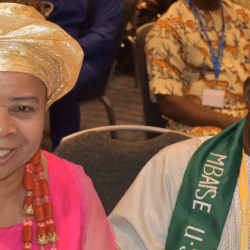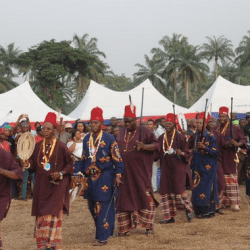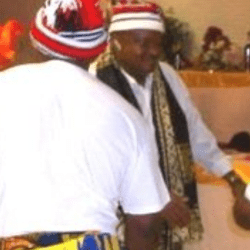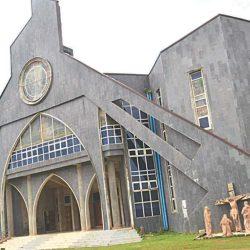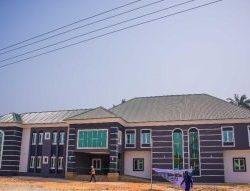The Ahiara Expedition is also referred to as Bende Onitsha Hinterland Expedition.

There was a lot of hostility between the British and the people of Mbaise following the Aro Expedition.
This increased following the appointment of H.M. Douglas.
Anti-British sentiment soared in the region, due to the brutal exploitation of the Igbo people by way of oppression from Douglas and the colonial administration.
Igbo resistance was unrelenting and hostility reached a climax when in March 1905, Douglas declared all roads in Ahiara open to traders and stopped road levies.
Road toll collection was the main source of revenue for Ahiara leaders and marked the most important source of their wealth and power.
The Ahiara leaders rejected the order as a direct attack on their political and economic power.
The murder of Dr Stewart
On 16 November 1905, Dr Rogers Stewart a British doctor who had been drafted in to help the British combat malaria, attempted to travel by bicycle from Owerri to Calabar.
He took a wrong turn onto the hostile Owerri-Bende road heading through Udo into Ezinihitte.
He was mistaken for Douglas the District Commissioner
He was displayed around the market places of Etiti and Ezinihitte (north Mbaise) Divisions, before they killed him at the Afor-Ukwu market of Onicha-Amairi.
His bicycle was tied to a tree by people of Onicha-Amairi, as the story is told – to prevent it returning to Owerri to report his death.
The people thought they had captured the much-hated District Commissioner H.M. Douglas, severed and shared his limbs amongst Mbaise clans as a mark of combined grievance.
Some stories claim he was decapitated and consumed, as a fetish protection from the control of the white man. Only his skull and some bones were eventually retrieved and sent to Calabar for burial.
The Expedition
On 7 December 1905, Douglas initiated the Ahiara expedition in retaliation for the refusal of Ahiara leaders to obey his orders and the subsequent murder of Dr Stewart.
The military action was led by Major Hugh Montague Trenchard, known as the greatest destroyer of towns in Eastern Nigeria.
The Ahiara indigenes learnt of the impending British attack and dug trenches around the village. When the British attacked on 7 December, the Ahiara defence was so strong they had to retreat.
The British army, assembled stronger reinforcements and launched another brutal attack, this time defeating the Ahiara natives.
Many natives were massacred, villages were wiped out, homes and crops were destroyed.
The British military destroyed the Afor Ukwu, market at Onicha, where Dr Stewart was killed and jailed the village leaders.
A native court which was set subsequently up by the British near Ezinihitte, was attacked by the natives who chased the staff away.
The British shut down the court and opened a new one in Nguru. The British branded the region, as extremely dangerous which was constantly patrolled by the soldiers.
The resistance to the Ahiara expedition was extremely severe, renowned as one of the most devastating and vicious attacks by the British colonial administration in Eastern Nigeria since the Aro expedition.
By April 1906, following a year of sustained attacks, with mass casualties and destruction, which wiped out entire villages, the British brought Ahiara as well as Mbaise under colonial control.
Reference
https://www.mbaiseonline.com/history/bende-onitsha-hinterland-expedition-1905-1906/

